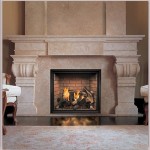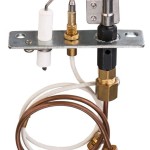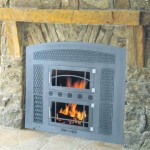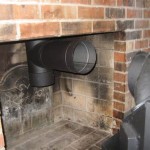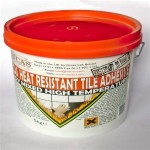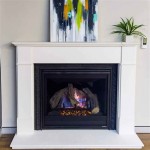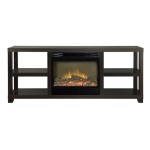Fireplace Heat Blowers: Enhancing Efficiency and Comfort
Fireplace heat blowers, also known as fireplace fans or fireplace boosters, represent a practical solution for increasing the efficiency of traditional fireplaces. These devices work by circulating the warm air produced by the fire out into the room, rather than allowing it to rise directly up the chimney. This process can significantly improve the overall heat distribution and comfort levels in a home, particularly in colder climates.
The principle behind a fireplace heat blower is relatively simple. A fire in a traditional fireplace primarily heats the surrounding firebox and the air directly above it. Without a blower, much of this heated air naturally rises and exits through the chimney. This not only wastes energy but also creates temperature imbalances within the room. The area closest to the fireplace may become uncomfortably warm, while other areas remain cooler. A fireplace heat blower addresses this issue by drawing the heated air from around the firebox and propelling it into the room, effectively redistributing the warmth.
The types of fireplace heat blowers vary considerably, depending on the fireplace design and the desired level of performance. Some models are designed to be installed inside the fireplace firebox, while others are freestanding units placed on the hearth or nearby. The selection of the appropriate blower depends on factors such as the size of the fireplace, the type of fuel used (wood, gas, or electric), and the desired level of heating enhancement.
Understanding the Benefits of Fireplace Heat Blowers
The primary advantage of using a fireplace heat blower lies in its ability to increase the efficiency of a fireplace. By circulating heated air, a blower can significantly reduce heat loss through the chimney. This means more of the heat generated by the fire is directed into the room, resulting in a warmer and more comfortable environment. This improved efficiency can also lead to a reduction in fuel consumption, potentially saving money on heating costs over time.
Improved heat distribution is another significant benefit. Without a blower, the heat generated by a fireplace tends to concentrate in the immediate vicinity of the firebox. This can create hot spots and leave other areas of the room feeling cold. A heat blower helps to distribute the warm air more evenly throughout the room, eliminating these temperature imbalances and creating a more consistent and comfortable environment. This is particularly beneficial in larger rooms or houses with open floor plans.
Furthermore, certain types of fireplace heat blowers can contribute to improved air quality. Some models include filtration systems that remove dust, pollen, and other allergens from the air as it is circulated. This can be a valuable feature for individuals with allergies or respiratory sensitivities, as it helps to create a cleaner and healthier indoor environment.
Types of Fireplace Heat Blowers
Various types of fireplace heat blowers are available, each designed to meet specific needs and fireplace configurations. Insert blowers, as the name suggests, are designed to be installed within the firebox of a fireplace insert. These blowers are typically compact and powerful, engineered to effectively circulate air within the confines of the insert. They often feature adjustable speed settings, allowing users to control the amount of heat distributed.
Hearth-mounted blowers are freestanding units placed on the hearth in front of the fireplace. These blowers are generally easier to install than insert blowers, as they do not require any modification to the fireplace itself. Hearth-mounted blowers often feature multiple fans and adjustable air vents, allowing for customized airflow direction. Some models also include thermostats that automatically control the blower's operation based on the room temperature.
Another type is vent-mounted blowers. These blowers are designed to be installed in the vents located above or around the fireplace opening. They typically draw air from the firebox and direct it into the room through the vents. Vent-mounted blowers are often used in fireplaces with existing vent systems, providing a discreet and efficient way to improve heat distribution.
Consideration must also be given to stove blowers, designed for use with wood or pellet stoves. These blowers are typically mounted on the back or side of the stove and circulate air around the stove's exterior, helping to distribute heat more evenly throughout the room. Stove blowers are particularly useful for maximizing the efficiency of these heating appliances.
Selecting the Right Fireplace Heat Blower
Choosing the appropriate fireplace heat blower requires careful consideration of several factors. The size and type of the fireplace are primary considerations. A large fireplace will require a more powerful blower than a smaller one to effectively circulate air throughout the room. Similarly, the type of fireplace (insert, freestanding, or vent-equipped) will dictate the type of blower that can be installed.
The heating needs of the space are also important. If the goal is to heat a large open area, a blower with a high airflow rate will be necessary. Conversely, a smaller room may only require a blower with a lower airflow rate. In addition, the desired level of noise should also be considered. Some blowers are quieter than others, and the noise level can be an important factor for individuals who are sensitive to sound.
The ease of installation is another factor to consider. Some blowers are relatively easy to install, requiring only basic tools and minimal technical expertise. Others may require professional installation, particularly those that need to be integrated into the fireplace or vent system. It is important to assess one's own capabilities and comfort level before attempting to install a fireplace heat blower.
Budget constraints will play a part in the selection process. Fireplace heat blowers range in price from relatively inexpensive models to more expensive, high-performance units. It is important to set a budget and then compare the features and performance of different blowers within that price range. Reading reviews and comparing specifications can help to make an informed decision.
Energy efficiency is another important consideration. Look for models with energy-efficient motors that consume minimal electricity. This will help to reduce operating costs and minimize the environmental impact. Some blowers also feature automatic shut-off functions that turn off the blower when the fire has died down, further conserving energy.
Finally, consider the warranty and customer support offered by the manufacturer. A longer warranty provides peace of mind and protection against defects. Reliable customer support can be invaluable if any problems arise during installation or operation. Check online reviews and ratings to assess the manufacturer's reputation for quality and customer service.
The installation process for a fireplace heat blower varies depending on the type of blower and the design of the fireplace. Insert blowers typically require some disassembly of the fireplace insert to access the blower compartment. The blower is then installed according to the manufacturer's instructions, and the insert is reassembled. Hearth-mounted blowers are generally easier to install, requiring only placement on the hearth and connection to a power outlet. Vent-mounted blowers may require some modification of the vent system to accommodate the blower.
Before beginning any installation, it is crucial to carefully read and understand the manufacturer's instructions. Disconnecting the power supply to the fireplace is a critical safety precaution to prevent electric shock. Using the correct tools and following the instructions carefully will help to ensure a safe and successful installation. If unsure about any aspect of the installation process, it is best to consult a qualified professional.
Regular maintenance is essential to ensure the continued performance and longevity of a fireplace heat blower. This typically involves cleaning the blower blades and motor periodically to remove dust and debris. A vacuum cleaner with a brush attachment can be used to gently clean these components. Avoid using water or other liquids to clean the blower, as this could damage the electrical components.
Inspect the blower's wiring and connections regularly to ensure they are secure and free from damage. If any loose or damaged wires are detected, they should be repaired or replaced immediately. Check the blower's air vents to ensure they are not blocked by debris. Clear any obstructions to allow for proper airflow.
If the blower starts to make unusual noises, such as squealing or grinding, it may indicate a problem with the motor or bearings. In this case, it is best to consult a qualified technician for repair. Attempting to repair the blower without proper training can be dangerous and may void the warranty.
Fireplace Heater 5 Tube W Blower

Fireplace Efficiency Blowers And Why You Should Have One

Grate Heater Wikipedia

Fireplace Blowers Explained How Fans Work Regency

Spitfire Tube Fireplace Heaters Heater Blower Heating And Plumbing

Fireplace Wood Burning Airculator 45 20k Btu S Heat Exchanger Blower He14501

Choose A Fireplace Grate Heater From The 3 Top Ing For 2024

Fireplace Wood Burning Airculator 45 20k Btu S Heat Exchanger Blower He14501

Fireplace Blower Fans What You Need For Heat Full Service Chimney

Fireplace Blower Heat Gas

